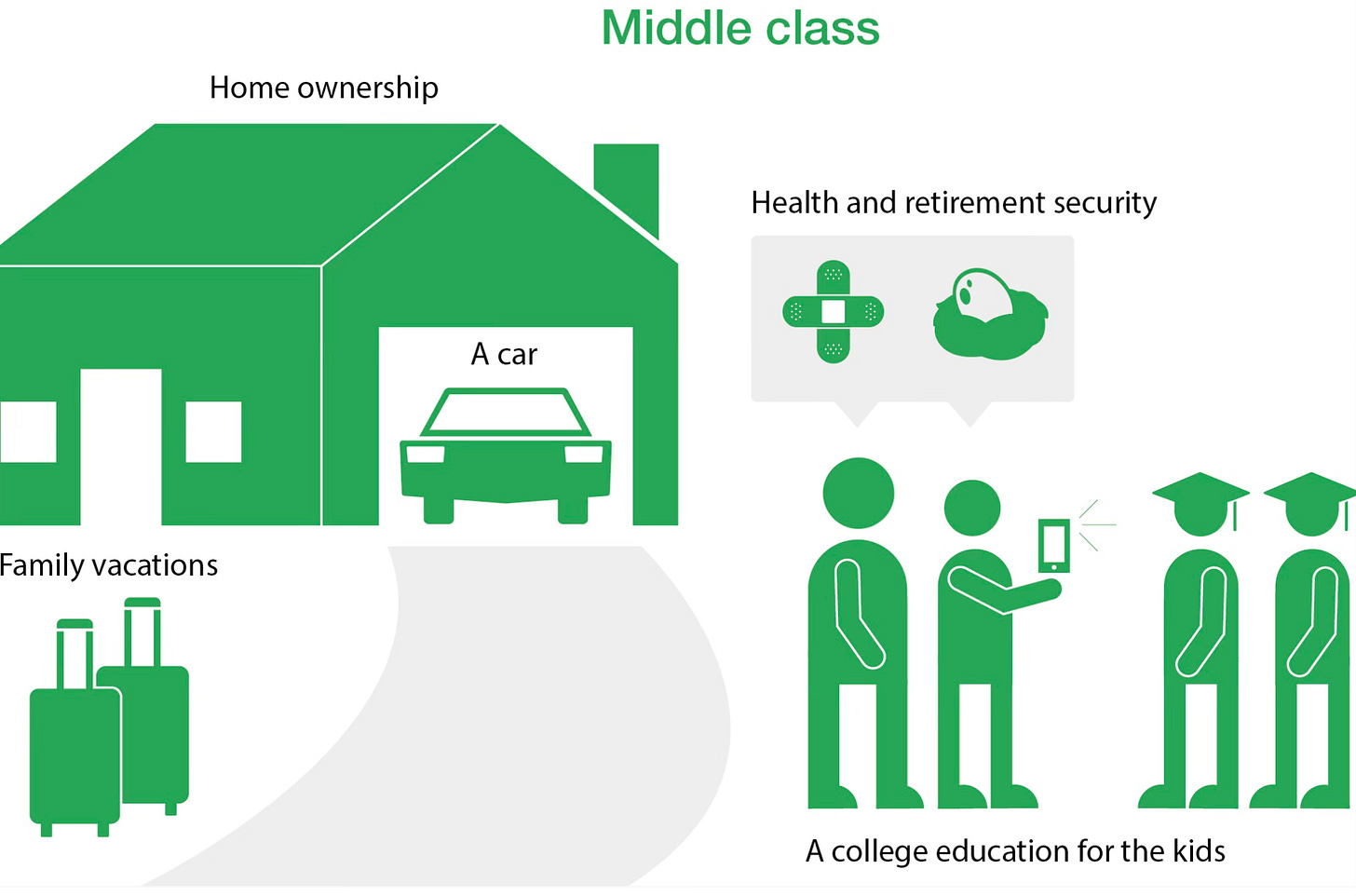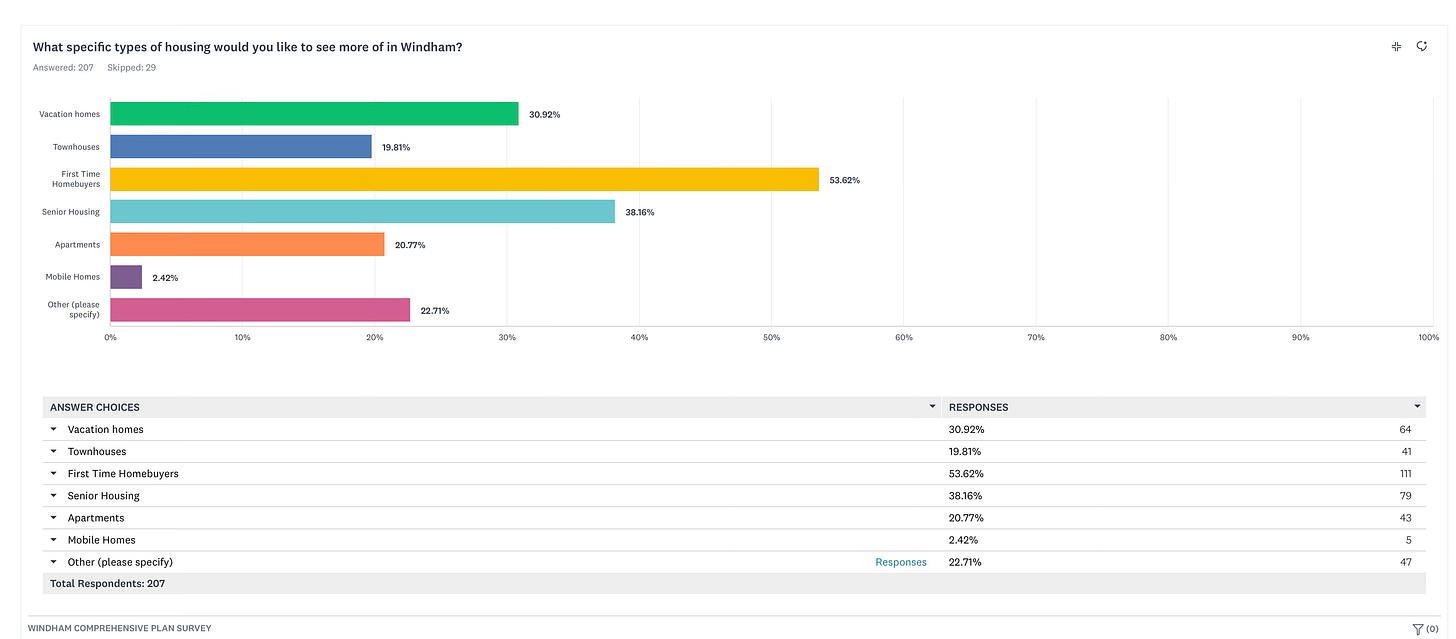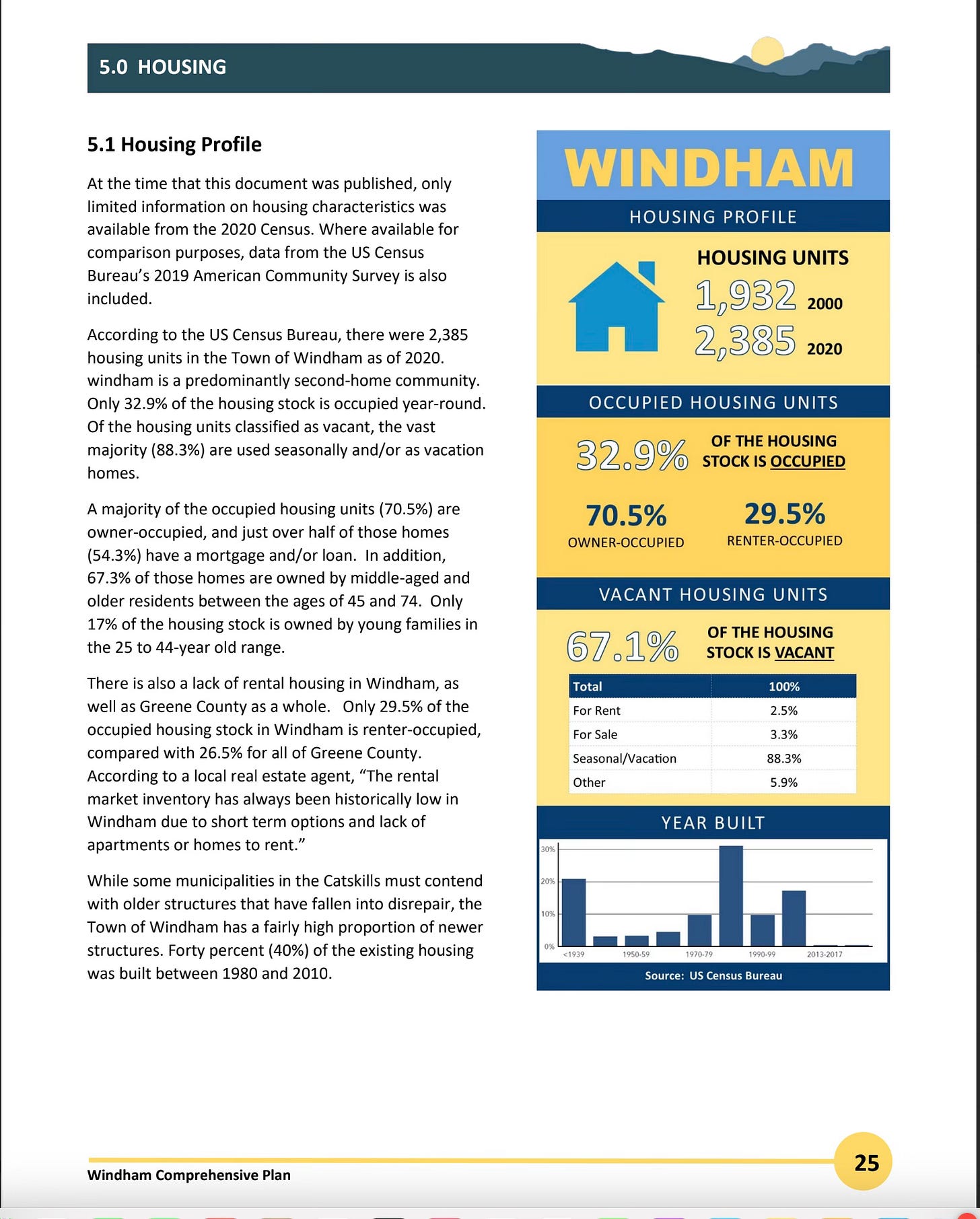According to Census Reporter.Org, 32% of our population is living in a household with an income of less than $50,000.00. The next income bracket in this report claims that household incomes $50,000-100,000 represent 31% of the population. Of course, breaking down income to categories like these can make income distribution seem far more equitable than it might otherwise be. For example, we don’t know if this bracket is dominated by $50,000-$65,000 households or households making $85,000 to $100,000 incomes. And even so, a household making $100,000 in income is not able to purchase homes in Windham.
For example, a quick survey of Zillow shows you the bleakness of what these people in the less than $50,000 precentile and even the $50,000 to $100,000 precentile of the income earners in our community are facing. They have options of range from $250,000 to $399,000. These options are also mostly condos designed for vacations and limited in space, with only a few homes. What all housing types share in common is that all of them are out of reach of nearly 1/3rd of our population. And even possibly too costly when you add in utilities, food costs, homeowner's association fees, and transportation to the mix, to even a large segment of the $50,000 to $100,000 bracket as well. These are traditional middle-class socio-economic demographics that make up the core of the American Experience.
When surveyed by Delaware Engineering’s Planner Helen Budrock for the Windham Comprehensive Plan of 2020 about what the community felt was the most important type of housing, the answer was “first-time home buyers” —53.62% of all respondents. This essentially means the community felt the most important type of housing units for the community would be affordable housing units. So that we can turn young families and young people into homeowners instead of renters. And will require a radical shift in our local proposals from the Town Government concerning zoning and economic development.
At present, only 17% of our housing stock is owned by people in the 25-44 year age range, according to our Windham Comprehensive plan (see above image). This demographic group is the most important group of people we need to attract to our community. But attracting isn’t enough; we must also maintain this segment of our population in a middle-class standard of living if we wish to continue to grow. That will be the hardest challenge we have given our development over the last 60 years towards a “predominantly second-homeowner community” — this has left our community focused primarily on the development of “vacation homes” and “tourism” as our primary industries.
How exactly we go about this process of transforming our community from a tourism-dominated dominated is going to require two basic changes:
creating affordable homes for a broader base of socio-economic members of our community.
creating long-term sustainable employment options with incomes that maintain and raise the standard of living in our community.
The process will take time, and there might be growing pains as we transition to a more developed and stronger local economy. This will require new ways of looking at the potential of our community. It will also provide our community with a sustainable and broad socio-economic base. Something that we are not building into the fabric of our community at present. For too long, we’ve been convinced that the development of Windham is only controlled by the ability to attract tourists. We must now look to broadening our economic base to include other long-term economic opportunities in our community that will build a strong and vibrant middle class and create a livable Main Street.
We must develop local business opportunities that attract new residents in the 25-36 year range, which will create families in our community. This is the only way we can see our population grow in the long term. Otherwise, we will face the same fate that so many communities in the Western World are facing with aging populations, low birth rates, and stagnating economic growth, like this community in Italy called “Fergona”, population 2700, with only 4 of school age for the primary school in the upcoming school year. We, too, could be facing this same outcome— school districts in all of Greene County are seeing sharp declines, including our own. In 1999, Windham Ashland Jewett Central School District (local school) had 500 students K-12. In 2023, that had dwindled to 281 PreK-12, and in 2024, the district was now operating at 285 students pre-K-12. That’s a reduction of 219 to 215 children in a 25-year period. If you say that the average family has 1.8 children in this 25-year period, that means we’ve lost roughly 121.667 to 119.444 families.
This should be considered a staggering loss of families and potential economic growth in our town that we could have harnessed in the same 25-year period. Part of the reason we lost these families is due to the fact that our middle-class families have been abandoned in favor of policies that promoted the growth of absentee second homeownership in the community. And this has made our property values skyrocket, which always sounds great when you talk about assessed values increasing each year. But remember, when your tax burden is kept low, like it has been in Windham at roughly 2.72% per 1000 dollars, it takes hundreds of millions of dollars in assessed value to generate even a modest amount of tax revenue. For example, our Town has touted a $22+ million increase in assessed values. But, as I’ve demonstrated before, this only generates an extra $59,000, roughly at the 2.72% tax rate. Whereas creating more jobs that spend more money in our economy through local development will increase spending on the development of new businesses will expanding our tax base much faster through greater growth. If we build a simple 300 new homes at $215,000 assessed rate, our tax base will grow by $174,500, more than double that of our $59,000 from a few extremely large homes! This doesn’t even take into account business expansion.
It turns out that building in density and building in the middle-class homes is the key to long-term success in our community.





